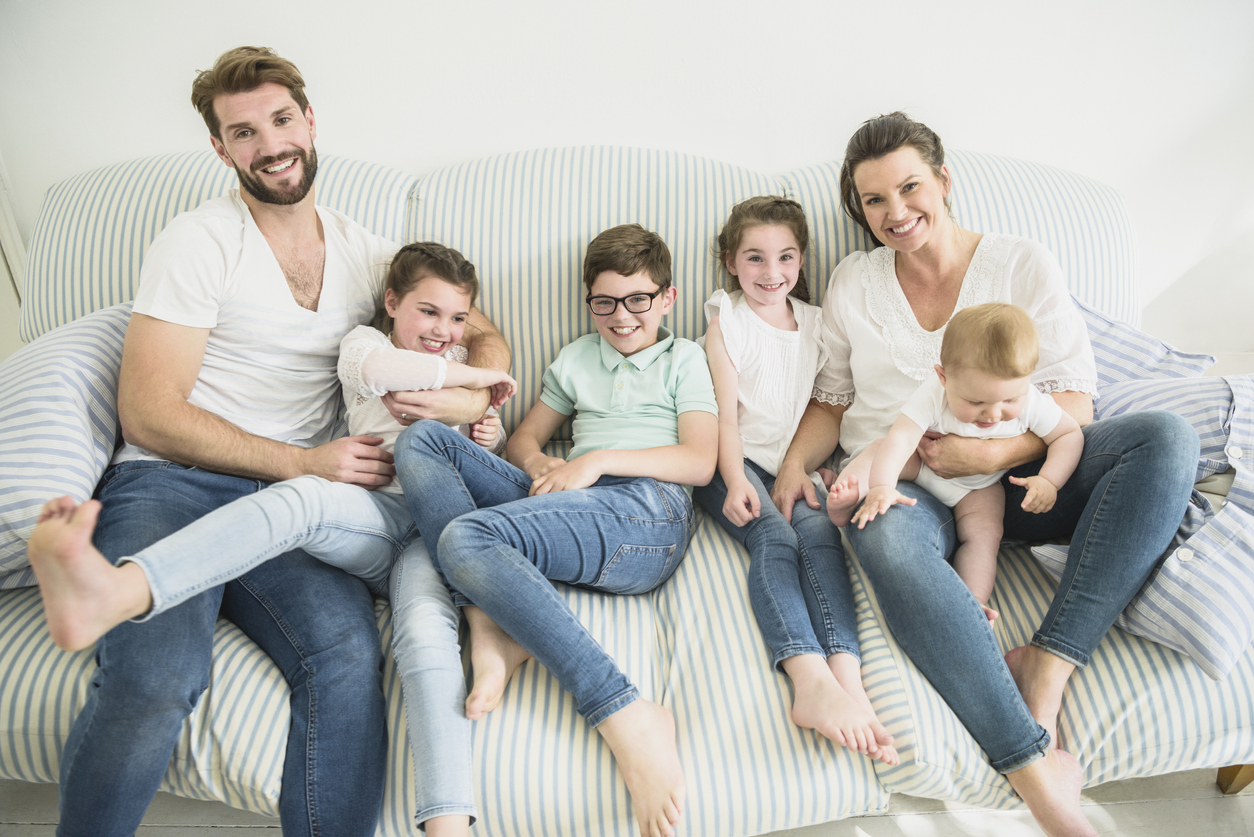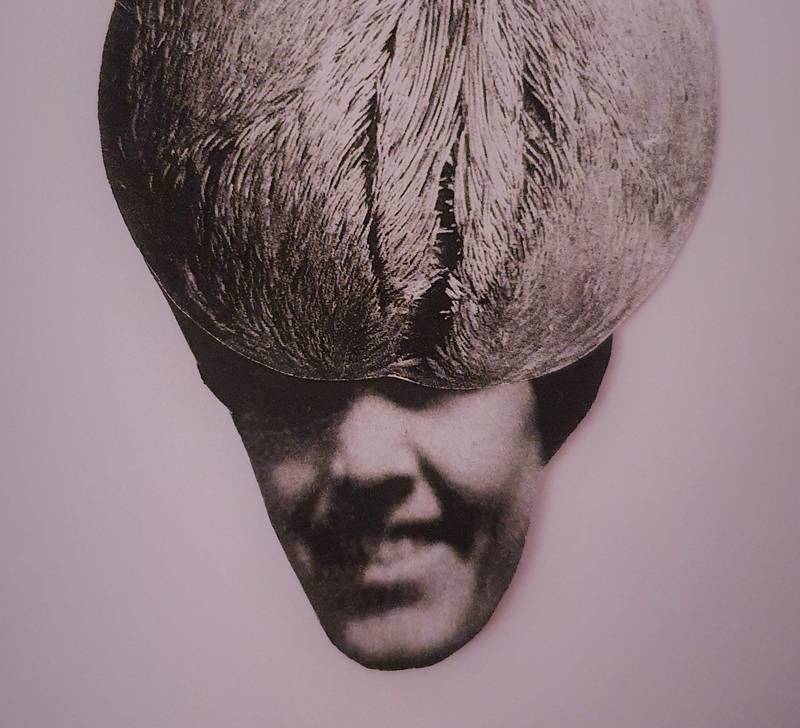Η εγκυμοσύνη είναι μια κρίσιμη περίοδος για φροντίδα και υποστήριξη ψυχικής υγείας, υποστηρίζει άλλη μια μελέτη
Κείμενο Αγγελική Λάλου
23 Νοεμβρίου, 2023
Παιδιά των οποίων οι μητέρες έχουν πολύ άγχος, ανησυχία ή κατάθλιψη κατά τη διάρκεια της εγκυμοσύνης μπορεί να διατρέχουν μεγαλύτερο κίνδυνο για προβλήματα ψυχικής υγείας και συμπεριφοράς κατά την παιδική και εφηβική τους ηλικία, σύμφωνα με έρευνα που δημοσιεύτηκε από την Αμερικανική Ψυχολογική Εταιρεία.
«Η έρευνά μας υποδηλώνει ότι η ψυχολογική δυσφορία κατά την περίοδο της εγκυμοσύνης έχει μια μικρή αλλά επίμονη επίδραση στον κίνδυνο των παιδιών για επιθετικές, απαγορευτικές και παρορμητικές συμπεριφορές», δήλωσε η συγγραφέας της μελέτης Irene Tung, PhD, του California State University Dominguez Hills.
«Αυτά τα ευρήματα προσθέτουν στα στοιχεία ότι η παροχή ευρέως προσβάσιμης φροντίδας ψυχικής υγείας και υποστήριξης κατά τη διάρκεια της εγκυμοσύνης μπορεί να είναι ένα κρίσιμο βήμα για την πρόληψη προβλημάτων συμπεριφοράς στην παιδική ηλικία».
Η Tung και οι συνεργάτες της ανέλυσαν δεδομένα από 55 μελέτες με περισσότερους από 45.000 συνολικά συμμετέχοντες.
Όλες οι μελέτες μέτρησαν την ψυχολογική δυσφορία των γυναικών κατά τη διάρκεια της εγκυμοσύνης (συμπεριλαμβανομένου του στρες, της κατάθλιψης ή του άγχους) και στη συνέχεια μέτρησαν τις «εξωτεριστικές συμπεριφορές» των παιδιών τους – συμπτώματα ιδιάζουσας ψυχικής υγείας, όπως η διαταραχή ελλειμματικής προσοχής υπερκινητικότητας ή η επιθετικότητα.
Συνολικά, οι ερευνητές διαπίστωσαν ότι οι γυναίκες που ανέφεραν περισσότερο άγχος, κατάθλιψη ή στρες ενώ ήταν έγκυοι ήταν πιο πιθανό να έχουν παιδιά με περισσότερα συμπτώματα ΔΕΠΥ ή που παρουσίαζαν περισσότερες δυσκολίες με επιθετική ή εχθρική συμπεριφορά, όπως αναφέρουν οι γονείς ή οι δάσκαλοι.
Η έρευνα δημοσιεύτηκε στο περιοδικό Psychological Bulletin.
Η έρευνα έχει υποδείξει εδώ και καιρό μια σχέση μεταξύ της ψυχικής υγείας των μητέρων κατά τη διάρκεια της εγκυμοσύνης και των εξωτερικευτικών συμπεριφορών των παιδιών.
Ωστόσο, πολλές προηγούμενες μελέτες δεν έχουν διαχωρίσει τις επιπτώσεις του στρες, του άγχους ή της κατάθλιψης κατά τη διάρκεια της εγκυμοσύνης από τις επιπτώσεις της ψυχολογικής δυσφορίας των γονιών μετά τη γέννηση ενός παιδιού.
Στην τρέχουσα μελέτη, οι ερευνητές συμπεριέλαβαν μόνο έρευνα στην οποία μετρήθηκε η ψυχολογική δυσφορία των μητέρων τόσο κατά τη διάρκεια όσο και μετά την εγκυμοσύνη.
Διαπίστωσαν ότι ακόμη και μετά τον έλεγχο της μετέπειτα (μεταγεννητικής) ψυχολογικής δυσφορίας, η δυσφορία κατά τη διάρκεια της εγκυμοσύνης αύξησε ιδιαίτερα τον κίνδυνο των παιδιών να αναπτύξουν προβλήματα εξωτερίκευσης.
Το αποτέλεσμα ίσχυε ανεξάρτητα από το αν τα παιδιά ήταν αγόρια ή κορίτσια.
Και ίσχυε για τα παιδιά στην πρώιμη παιδική ηλικία (ηλικίες 2-5 ετών), στη μέση παιδική ηλικία (6-12) και στην εφηβεία (13-18), αν και η επίδραση ήταν ισχυρότερη στην πρώιμη παιδική ηλικία.
Τα ευρήματα συνάδουν με θεωρίες που υποδηλώνουν ότι η έκθεση σε ορμόνες του στρες στη μήτρα μπορεί να επηρεάσει την ανάπτυξη του εγκεφάλου των παιδιών, σύμφωνα με τους ερευνητές.
Η μελλοντική έρευνα θα πρέπει να επικεντρωθεί στην αύξηση της ποικιλομορφίας για να κατανοήσει τις πολιτισμικές και κοινωνικοοικονομικές μεταβλητές που επηρεάζουν το προγεννητικό στρες και να αναπτύξει αποτελεσματικές παρεμβάσεις, σύμφωνα με την Tung.
«Οι περισσότερες υπάρχουσες έρευνες έχουν επικεντρωθεί σε δείγματα λευκών, μεσαίας τάξης και ανώτερης εκπαίδευσης. Όμως οι εμπειρίες ρατσισμού, οι οικονομικές ανισότητες και η έλλειψη πρόσβασης στην υγειονομική περίθαλψη είναι γνωστοί παράγοντες που συμβάλλουν στο άγχος κατά τη διάρκεια της εγκυμοσύνης. Η κατανόηση του τρόπου με τον οποίο η ψυχολογική δυσφορία κατά τη διάρκεια της εγκυμοσύνης επηρεάζει τις υποεκπροσωπούμενες οικογένειες είναι το κλειδί για να αναπτυχθούν δίκαιες πολιτικές και παρεμβάσεις για τη δημόσια υγεία», είπε.
Αυτή και οι συνάδελφοί της διεξάγουν τώρα δύο μελέτες που επικεντρώνονται στην κατανόηση των τύπων υποστήριξης και πόρων που προάγουν την ανθεκτικότητα και την αποκατάσταση από το στρες κατά τη διάρκεια της εγκυμοσύνης, ιδιαίτερα για οικογένειες που αντιμετωπίζουν ανισότητες. Ο στόχος είναι να βοηθήσει στην ενημέρωση των πολιτιστικών συμπεριληπτικών προληπτικών παρεμβάσεων κατά τη διάρκεια της εγκυμοσύνης, ώστε να υποστηριχθεί η πρώιμη ανθεκτικότητα και η ευημερία της ψυχικής υγείας για τους γονείς και τα παιδιά τους.
High levels of maternal stress during pregnancy linked to children’s behavior problems | ScienceDaily
ΠΗΓΗ:
23 Νοεμβρίου, 2023
Παιδιά των οποίων οι μητέρες έχουν πολύ άγχος, ανησυχία ή κατάθλιψη κατά τη διάρκεια της εγκυμοσύνης μπορεί να διατρέχουν μεγαλύτερο κίνδυνο για προβλήματα ψυχικής υγείας και συμπεριφοράς κατά την παιδική και εφηβική τους ηλικία, σύμφωνα με έρευνα που δημοσιεύτηκε από την Αμερικανική Ψυχολογική Εταιρεία.
«Η έρευνά μας υποδηλώνει ότι η ψυχολογική δυσφορία κατά την περίοδο της εγκυμοσύνης έχει μια μικρή αλλά επίμονη επίδραση στον κίνδυνο των παιδιών για επιθετικές, απαγορευτικές και παρορμητικές συμπεριφορές», δήλωσε η συγγραφέας της μελέτης Irene Tung, PhD, του California State University Dominguez Hills.
«Αυτά τα ευρήματα προσθέτουν στα στοιχεία ότι η παροχή ευρέως προσβάσιμης φροντίδας ψυχικής υγείας και υποστήριξης κατά τη διάρκεια της εγκυμοσύνης μπορεί να είναι ένα κρίσιμο βήμα για την πρόληψη προβλημάτων συμπεριφοράς στην παιδική ηλικία».
Η Tung και οι συνεργάτες της ανέλυσαν δεδομένα από 55 μελέτες με περισσότερους από 45.000 συνολικά συμμετέχοντες.
Όλες οι μελέτες μέτρησαν την ψυχολογική δυσφορία των γυναικών κατά τη διάρκεια της εγκυμοσύνης (συμπεριλαμβανομένου του στρες, της κατάθλιψης ή του άγχους) και στη συνέχεια μέτρησαν τις «εξωτεριστικές συμπεριφορές» των παιδιών τους – συμπτώματα ιδιάζουσας ψυχικής υγείας, όπως η διαταραχή ελλειμματικής προσοχής υπερκινητικότητας ή η επιθετικότητα.
Συνολικά, οι ερευνητές διαπίστωσαν ότι οι γυναίκες που ανέφεραν περισσότερο άγχος, κατάθλιψη ή στρες ενώ ήταν έγκυοι ήταν πιο πιθανό να έχουν παιδιά με περισσότερα συμπτώματα ΔΕΠΥ ή που παρουσίαζαν περισσότερες δυσκολίες με επιθετική ή εχθρική συμπεριφορά, όπως αναφέρουν οι γονείς ή οι δάσκαλοι.
Η έρευνα δημοσιεύτηκε στο περιοδικό Psychological Bulletin.
Η έρευνα έχει υποδείξει εδώ και καιρό μια σχέση μεταξύ της ψυχικής υγείας των μητέρων κατά τη διάρκεια της εγκυμοσύνης και των εξωτερικευτικών συμπεριφορών των παιδιών.
Ωστόσο, πολλές προηγούμενες μελέτες δεν έχουν διαχωρίσει τις επιπτώσεις του στρες, του άγχους ή της κατάθλιψης κατά τη διάρκεια της εγκυμοσύνης από τις επιπτώσεις της ψυχολογικής δυσφορίας των γονιών μετά τη γέννηση ενός παιδιού.
Στην τρέχουσα μελέτη, οι ερευνητές συμπεριέλαβαν μόνο έρευνα στην οποία μετρήθηκε η ψυχολογική δυσφορία των μητέρων τόσο κατά τη διάρκεια όσο και μετά την εγκυμοσύνη.
Διαπίστωσαν ότι ακόμη και μετά τον έλεγχο της μετέπειτα (μεταγεννητικής) ψυχολογικής δυσφορίας, η δυσφορία κατά τη διάρκεια της εγκυμοσύνης αύξησε ιδιαίτερα τον κίνδυνο των παιδιών να αναπτύξουν προβλήματα εξωτερίκευσης.
Το αποτέλεσμα ίσχυε ανεξάρτητα από το αν τα παιδιά ήταν αγόρια ή κορίτσια.
Και ίσχυε για τα παιδιά στην πρώιμη παιδική ηλικία (ηλικίες 2-5 ετών), στη μέση παιδική ηλικία (6-12) και στην εφηβεία (13-18), αν και η επίδραση ήταν ισχυρότερη στην πρώιμη παιδική ηλικία.
Τα ευρήματα συνάδουν με θεωρίες που υποδηλώνουν ότι η έκθεση σε ορμόνες του στρες στη μήτρα μπορεί να επηρεάσει την ανάπτυξη του εγκεφάλου των παιδιών, σύμφωνα με τους ερευνητές.
Η μελλοντική έρευνα θα πρέπει να επικεντρωθεί στην αύξηση της ποικιλομορφίας για να κατανοήσει τις πολιτισμικές και κοινωνικοοικονομικές μεταβλητές που επηρεάζουν το προγεννητικό στρες και να αναπτύξει αποτελεσματικές παρεμβάσεις, σύμφωνα με την Tung.
«Οι περισσότερες υπάρχουσες έρευνες έχουν επικεντρωθεί σε δείγματα λευκών, μεσαίας τάξης και ανώτερης εκπαίδευσης. Όμως οι εμπειρίες ρατσισμού, οι οικονομικές ανισότητες και η έλλειψη πρόσβασης στην υγειονομική περίθαλψη είναι γνωστοί παράγοντες που συμβάλλουν στο άγχος κατά τη διάρκεια της εγκυμοσύνης. Η κατανόηση του τρόπου με τον οποίο η ψυχολογική δυσφορία κατά τη διάρκεια της εγκυμοσύνης επηρεάζει τις υποεκπροσωπούμενες οικογένειες είναι το κλειδί για να αναπτυχθούν δίκαιες πολιτικές και παρεμβάσεις για τη δημόσια υγεία», είπε.
Αυτή και οι συνάδελφοί της διεξάγουν τώρα δύο μελέτες που επικεντρώνονται στην κατανόηση των τύπων υποστήριξης και πόρων που προάγουν την ανθεκτικότητα και την αποκατάσταση από το στρες κατά τη διάρκεια της εγκυμοσύνης, ιδιαίτερα για οικογένειες που αντιμετωπίζουν ανισότητες. Ο στόχος είναι να βοηθήσει στην ενημέρωση των πολιτιστικών συμπεριληπτικών προληπτικών παρεμβάσεων κατά τη διάρκεια της εγκυμοσύνης, ώστε να υποστηριχθεί η πρώιμη ανθεκτικότητα και η ευημερία της ψυχικής υγείας για τους γονείς και τα παιδιά τους.
High levels of maternal stress during pregnancy linked to children’s behavior problems | ScienceDaily
ΠΗΓΗ:

 In the podcast we explore what we might do at each of these levels:Society – We could notice the images around us and be critical of them. We could confront fat-shaming remembering that it’s actually poverty, type of diet, and fitness that relate to health – not fatness; that being ‘underweight’ is generally more risky health-wise than being ‘overweight’; that these categories are based on an old model of measurement that doesn’t relate to how bodies are these days; and that shaming people about their bodies makes everything far worse – not better – for them. We could engage in body-related activism. We could seek out different subcultures that incorporate more diversity of bodies or expand our ideas of what is beautiful.
In the podcast we explore what we might do at each of these levels:Society – We could notice the images around us and be critical of them. We could confront fat-shaming remembering that it’s actually poverty, type of diet, and fitness that relate to health – not fatness; that being ‘underweight’ is generally more risky health-wise than being ‘overweight’; that these categories are based on an old model of measurement that doesn’t relate to how bodies are these days; and that shaming people about their bodies makes everything far worse – not better – for them. We could engage in body-related activism. We could seek out different subcultures that incorporate more diversity of bodies or expand our ideas of what is beautiful.


